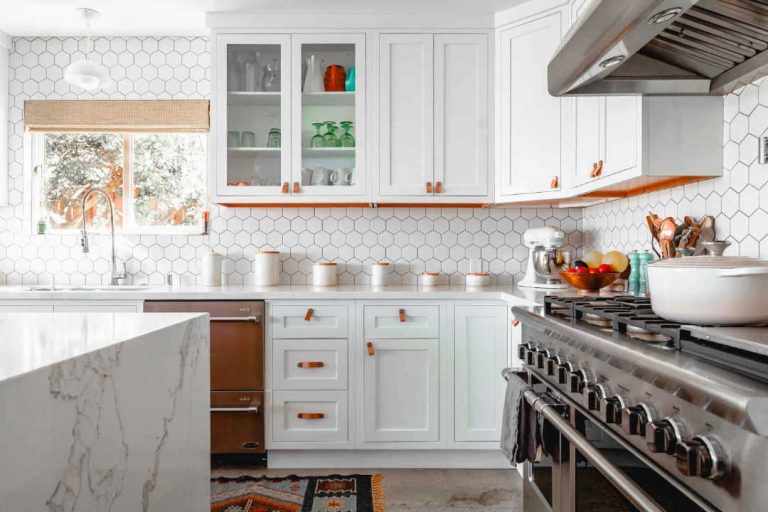If you have ever owned a glossy surface, you might have noticed scuff marks appearing on it over time. The assumption that scuff marks are more prone on surfaces with a gloss finish has been around for a long time. But is it true? In this article, we will explore this common assumption and provide valuable insights and care tips to keep your gloss finishes looking pristine.
Scuff marks can be an eyesore on beautiful finishes, leading some people to shy away from glossy surfaces. But before you make any design decisions, let’s take a deep dive into the truth behind scuff marks and their correlation with a gloss finish. This article aims to provide an in-depth analysis and equip you with the right knowledge to make informed decisions regarding your finishes. Join us as we debunk the myth and tackle the factors behind scuff marks on glossy surfaces.
The Myth of Scuff Marks and Gloss Finishes
It’s a commonly held belief that surfaces with glossy finishes are more prone to scuff marks. However, this is actually a myth. The visibility of scuff marks may be more noticeable on glossy finishes, but the likelihood of scuff marks occurring has more to do with the quality and hardness of the material used for the finish.
For example, a high-quality gloss finish on a hardwood floor is less likely to show scuff marks because of the hardness of the wood. On the other hand, a glossy finish on a soft plastic material may be more prone to scuff marks.
Therefore, it’s important to choose a high-quality and durable material for your gloss finish if you want to minimize the appearance of scuff marks.
Don’t let the myth of scuff marks and gloss finishes prevent you from choosing the perfect finish for your project. With careful consideration of the material used, you can enjoy the beauty and elegance of gloss finishes without worrying about scuff marks ruining your surfaces.
Factors Affecting Scuff Marks on Glossy Surfaces
Glossy finishes can add a polished and sophisticated look to furniture, floors, and other surfaces. However, they are also susceptible to scuff marks, which can detract from their appearance. The likelihood of scuff marks on glossy surfaces depends on various factors, including:
Type of Material
The type of material used for the glossy finish can affect how easily it scuffs. Softer materials or those with a lower hardness rating are generally more susceptible to scuff marks than harder materials. For example, a glossy finish on softwood or bamboo is more prone to scuff marks than a similar finish on hardwood.
Level of Glossiness
The level of glossiness can also determine how easily scuff marks appear. High gloss finishes typically show scuff marks more prominently than lower gloss finishes. For instance, a high gloss finish on a floor may show scuff marks more visibly than a satin finish on the same floor.
Protective Coatings
Protective coatings play a vital role in the prevention of scuff marks on glossy surfaces. A protective coating that is resistant to scratches and scuffs can add an extra layer of protection to your glossy finish. Some protective coatings, such as wax or polish, can also help to mask small scuff marks.
By understanding the factors detailed above, you can take proactive steps to prevent and minimize scuff marks on your glossy surfaces.
Tips for Keeping Gloss Finishes Pristine and Scuff-Free
Whether it’s your car’s glossy paint job or your kitchen countertops, keeping gloss finishes scuff-free can be a daunting task. But fear not, because we’ve got you covered with some practical tips and techniques to prevent and remove scuff marks from your glossy surfaces.
Tip #1: Use Protective Measures
Prevention is better than cure, and this certainly holds true for scuff marks on gloss finishes. To prevent scuffs from appearing in the first place, consider using protective measures. These can range from placing coasters and mats on your furniture to using car covers and protective films on your vehicle.
Tip #2: Proper Cleaning and Maintenance
Keeping your glossy surfaces clean and well-maintained is key to preventing scuff marks. Here are some tips:
- Use a microfiber cloth or soft sponge to avoid scratches while cleaning.
- Opt for mild cleaning solutions, as harsh chemicals can damage the finish.
- Avoid using abrasive cleaners or scrubbers, which can leave marks on the surface.
- Dry the surface thoroughly to prevent water spots.
Tip #3: Try Removing Scuff Marks with Household Items
If you do end up with scuff marks on your glossy surfaces, try these household items:
- Toothpaste: Apply a small amount of toothpaste on a soft cloth and gently rub the scuff mark in circular motions until it disappears.
- Rubbing alcohol: Dampen a cloth with rubbing alcohol and gently rub the scuffed area until the mark disappears.
- Baking soda: Mix baking soda with water to form a thick paste, apply it to the scuffed area, and gently rub it in a circular motion until the mark disappears.
By following these simple tips, you can protect your gloss finishes from scuff marks and keep them looking beautiful for years to come.
Conclusion
We have come to the end of our exploration into the relationship between scuff marks and gloss finishes. Through our research, we have discovered that the assumption that gloss finishes are more prone to scuff marks is a myth.
While it is true that scuff marks may be more visible on glossy surfaces, the likelihood of their occurrence depends on various factors, such as the type of material used, level of glossiness, and protective coatings applied.
To keep your gloss finishes looking their best and prevent scuff marks, it’s essential to follow proper cleaning and maintenance routines, use protective measures (such as floor mats or furniture pads), and implement the care tips outlined in this article.
By taking these steps, you can maintain the beauty and longevity of your gloss finishes and keep scuff marks at bay. Happy cleaning!
- How to Clean Kitchen Floor Grout Naturally: Easy DIY Methods - June 25, 2024
- How to Clean Thermoplastic Kitchen Cabinets Properly: Expert Tips - June 19, 2024
- How to Clean Mica Kitchen Cabinets: A Simple Guide - June 19, 2024






